Contrary to popular belief when I first started carp fishing the world had actually moved onto glass fibre for rod construction rather than the cane bean poles used by the previous generation and the carbon fibre revolution was more than a distinct glimmer on the horizon and was just beginning to make its stiff and lightweight presence felt.
My tools at the time were much loved 2lb North Western blanks, SS5s I seem to recall, with a 2lb test curve and a compound taper through action which really meant a through action – unlike today’s so called ‘through action’ which tends to mean a mostly tip to middle action with solid power in the butt. My old NW’s folded right round under pressure and just kept going and going and going…right to the very end of the creaking cork handle.
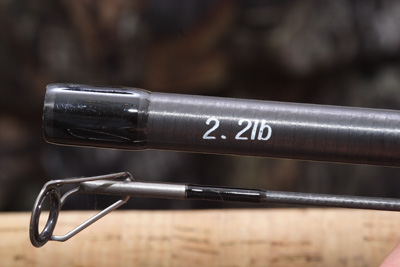 I used these rods not only for my carping but also for pike and they were my catfishing rods during my early days of experimenting on Claydon Lake too; they could chuck a 2oz lead as far as I ever needed to launch one, coped admirably with freelining squid or eel sections and were forgiving (to say the least) when casting frozen mackerel tails and half herrings. As far as their fish-playing action was concerned they were a total delight and to this day I have rarely come across anything which matched the sheer joy of REALLY feeling a big fish power off as with those old glass sticks. Proper old school!
I used these rods not only for my carping but also for pike and they were my catfishing rods during my early days of experimenting on Claydon Lake too; they could chuck a 2oz lead as far as I ever needed to launch one, coped admirably with freelining squid or eel sections and were forgiving (to say the least) when casting frozen mackerel tails and half herrings. As far as their fish-playing action was concerned they were a total delight and to this day I have rarely come across anything which matched the sheer joy of REALLY feeling a big fish power off as with those old glass sticks. Proper old school!
At the time a 2lb test was pretty much standard for most carp anglers, I went on to have a set of 1.5lb blanks made up for tench and light carp and some 2.5lb fast taper ‘pokers’ for heavy duty work and to this day most of my carping is still done with rods in the 2.25 to 2.75lb test – so how come everyone else out there is using carp rods with a 3 to 3.5lb test?
The reason is because the carp fishing media largely tells you that these are the rods you should be using! The current carp fishing gurus are out there with the latest carbon technology, matching the rods with reels the size of a cement mixer and chucking 5oz leads to infinity and because angling, like most things in the current day and age, is image and media driven everyone thinks they need to have the same if they are to be a better angler and to emulate their idols.
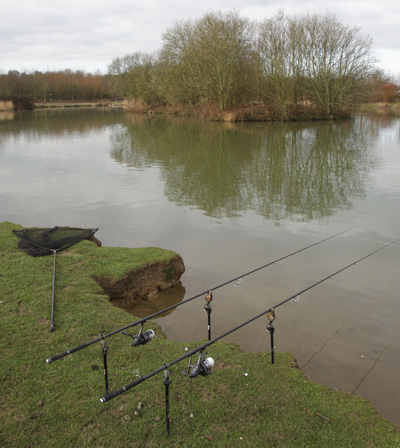 Sadly the ‘sheep’ who are dedicated followers of fashion seem to have trouble understanding that their commercial pools dotted with islands and stuffed with doubles are not the same beast as a windswept big pit where you need to drop a bait at 120m plus to reach an island drop off. I’ve given up counting the instances of inappropriate tackle I’ve seen around a variety of venues, not just commercials, but the owners of the tackle really don’t seem to care – they look like their idols and look the part to their mates and seemingly that’s all that matters to them.
Sadly the ‘sheep’ who are dedicated followers of fashion seem to have trouble understanding that their commercial pools dotted with islands and stuffed with doubles are not the same beast as a windswept big pit where you need to drop a bait at 120m plus to reach an island drop off. I’ve given up counting the instances of inappropriate tackle I’ve seen around a variety of venues, not just commercials, but the owners of the tackle really don’t seem to care – they look like their idols and look the part to their mates and seemingly that’s all that matters to them.
There are some surprisingly big name sheep out there too – I remember photographing a feature with a well-known angling ‘celebrity’ on a one-acre pool stuffed with singles and the occasional double and, having struggled all afternoon for a bite, he went on to hook and lose three fish on the bounce. He seemed perplexed and was questioning his choice of hook pattern when instead he should have been looking to his Century FMJ rods which were perfectly designed to whack to the horizon and deal with good fish but which were none too good at cushioning hookholds with scamps in the margins. I seem to recall the said celeb did go on to save the day with a fish of about 5lb which to my mind was rather embarrassing but the reel seat of the rod and the shiny big pit loaded with 15lb line locked onto it looked nice and sparkly in the pictures so he went away happy. He’s still very much involved with the angling industry these days so I shall spare his blushes and he’s a lovely chap – but I’ve never met a more inappropriate ‘top’ carper.
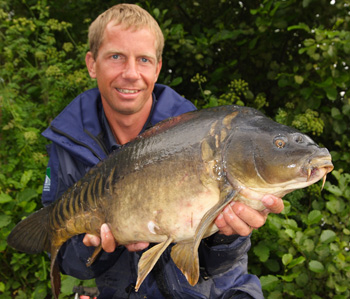 Conversely, one of the finest examples of angling I ever witnessed was on the same complex as the above disaster when noted commercial pool match angler Andy Findlay totally took apart what was then regarded as a ‘serious’ doubles and twenties water with the odd 30. He achieved this by employing a 1.75lb barbel rod, 8lb line and size 10 hook – beautifully balanced kit which, in the absence of major snags, will stop just about any carp that swims. The ‘Fin’ is a commercial pool genius and it was his pinpoint feeding that day which resulted in his getting the bites but he showed total mastery of balancing his kit and using balanced tackle is what getting the best from your fishing is so often about.
Conversely, one of the finest examples of angling I ever witnessed was on the same complex as the above disaster when noted commercial pool match angler Andy Findlay totally took apart what was then regarded as a ‘serious’ doubles and twenties water with the odd 30. He achieved this by employing a 1.75lb barbel rod, 8lb line and size 10 hook – beautifully balanced kit which, in the absence of major snags, will stop just about any carp that swims. The ‘Fin’ is a commercial pool genius and it was his pinpoint feeding that day which resulted in his getting the bites but he showed total mastery of balancing his kit and using balanced tackle is what getting the best from your fishing is so often about.
Balance is all about selecting not just the right rod for the task in hand but the right reel and line to use with it, the appropriate hooklength and hook and the right lead, shot or float – it is getting everything you use to work together in the most harmonious and effective way.
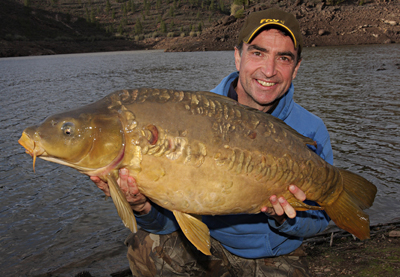 The Fin used his barbel rod for carp and I use not just my barbel rods but also my barbel rigs for a lot of my carp fishing these days with the most recent big fish success a scaley whacker of 35lb 12oz much to the amusement of top carpers Chris Rose and Steve Spurgeon who had been ribbing me mercilessly all day about my barbel fishing approach to carp but as many match angler v carp angler competitions over the years have proved it is mastery of balanced tackle which is so often the key to catching.
The Fin used his barbel rod for carp and I use not just my barbel rods but also my barbel rigs for a lot of my carp fishing these days with the most recent big fish success a scaley whacker of 35lb 12oz much to the amusement of top carpers Chris Rose and Steve Spurgeon who had been ribbing me mercilessly all day about my barbel fishing approach to carp but as many match angler v carp angler competitions over the years have proved it is mastery of balanced tackle which is so often the key to catching.
Of course it’s not just carp rods and carp anglers; there are instances of inappropriate and unbalanced tackle throughout the whole spectrum of the angling world. I’m sure we have all seen the odd noddy pike fishing with a boat rod and curly 50lb mono (sadly they are often the ones who hook the 20’s as well…) and let’s not forget the light rod brigade too who think they can chuck out a carp rig with boilie attached on a light float rod or indeed the ‘barbel’ anglers who think the tip rod they use for their skimmer fishing will also anchor a big lead in a heavy flow. Getting closer to the mark are the anglers, and there are an awful lot of them, who think barbel kit is appropriate to chub fish with and vice versa.
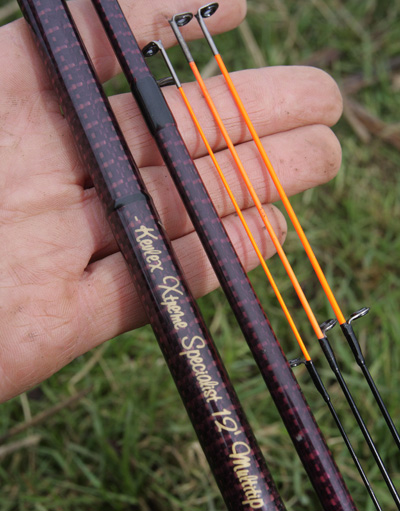 I fondly remember the days when I had just one rod for river fishing, albeit it was a twin tip with an Avon-style section and a quiver tip which did give me a semblance of versatility. The truth of the matter though is that an Avon style top is wholly unsuited to successful chub fishing and, with one exception, a quiver tip is about as much use to a barbel angler as a bicycle is to a fish.
I fondly remember the days when I had just one rod for river fishing, albeit it was a twin tip with an Avon-style section and a quiver tip which did give me a semblance of versatility. The truth of the matter though is that an Avon style top is wholly unsuited to successful chub fishing and, with one exception, a quiver tip is about as much use to a barbel angler as a bicycle is to a fish.
Chub and barbel may sometimes frequent the same swims but they are entirely different animals when it comes to catching them and that is why barbel are usually very easy to catch and chub are not! Unless you are pointing the rod at your bait and touch legering a quiver tip as light as you can get away with in the river conditions is essential to hit chub bites consistently, whereas the only time a quiver should ever be fitted when targeting barbel is when you are upstream legering and looking for a delicately balanced tip to straighten to indicate a bite. Even then it is usually better to watch for the line to slacken, rather than the tip. You can fish relatively crudely and yet regularly catch big barbel – as the many carp anglers who have turned their attentions to barbel in recent years attest – but you cannot consistently do the same with chub; they are far too smart for that!
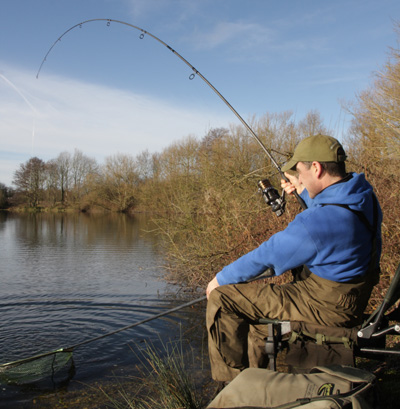 As far as getting the balance right it is very much a juggling act whatever you fish for. By scaling down hook size and line diameter you will always buy yourself more bites whatever species you fish for but by doing so you will also open yourself up to the possibility of losing more fish – and the lighter you go the more the problem is exacerbated – yet more bites but increasingly hard to land the fish you hook.
As far as getting the balance right it is very much a juggling act whatever you fish for. By scaling down hook size and line diameter you will always buy yourself more bites whatever species you fish for but by doing so you will also open yourself up to the possibility of losing more fish – and the lighter you go the more the problem is exacerbated – yet more bites but increasingly hard to land the fish you hook.
By scaling down your rod and thinking about its action as you scale down your terminal tackle you start to push the odds back in your favour – to an extent. A nice through-actioned rod will better protect a light hooklength when a more tippy or tip to middle rod would not but clearly a rod with more backbone is to your advantage in certain situations; light rods and frail lines do not, for example, sit easily where any sort of snag is involved – it really is horses for courses.
Extreme weed and snag fishing excepted most anglers could put a lot more fish on the bank every season by just putting a little more thought into their gear and scaling down in an appropriate and balanced way. Just what is appropriate is a matter of individual interpretation and it really is a case of making a risk assessment in every different swim you fish. Even then you have to be careful – just because you think you can get away with landing a big fish on light line in a particular swim it doesn’t mean it is necessarily the best thing to do – you have to think about the fish as well. You have to question every decision you take carefully and look at all of the consequences. For example; by careful balancing you could probably get the bite you need in an open swim but would it then be appropriate to play a big barbel for twenty minutes in the middle of hot summer day…
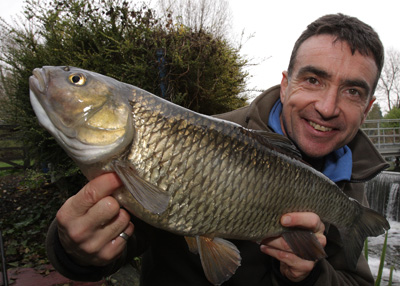 All things considered it is possible to get away with far more than you think. Try spooling a reel with 4lb line, attaching it to a 1.75 or 2lb test barbel rod, tying the line off to a post then pulling as if you were playing a fish – you’ll be amazed and will struggle to break the line! Try it again with a 3lb plus test fast action carp rod and see the difference. OK, so you would never, I hope, couple a fast action rod with 4lb line but it illustrates the point nicely.
All things considered it is possible to get away with far more than you think. Try spooling a reel with 4lb line, attaching it to a 1.75 or 2lb test barbel rod, tying the line off to a post then pulling as if you were playing a fish – you’ll be amazed and will struggle to break the line! Try it again with a 3lb plus test fast action carp rod and see the difference. OK, so you would never, I hope, couple a fast action rod with 4lb line but it illustrates the point nicely.
It’s the same with hooks, providing you select a pattern with a decent wire gauge in relation to its size to give a good combination of strength to subtlety you will be shocked at what you can stop and what is more you will find that smaller hooks tend to go in – and stay in – better than larger ones.
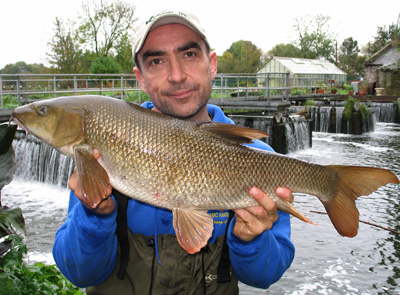 Most carp anglers are shocked by the fact I rarely, if ever, go above a size 10 hook for my fishing in the UK and unless I’m flood fishing or rolling a big lump of meat a 10 is the largest I would ever dream of fishing for barbel too. After landing countless barbel on my chub tackle with no problem whatsoever I’ve started to think about the line I use for my barbel fishing too and my days of hanging out a standard 12lb mono or fluorocarbon are long gone in all but the most serious conditions. With the right rod in a decent swim I’m comfortable with 6lb line these days, 8lb if it is snaggy. For my chubbing feeder fishing a single maggot on a size 18 or 20 to a 2.5lb or 3lb hooklength is standard for me now with paste or flake baits usually fished on a size 10 or 12 to 4lb.
Most carp anglers are shocked by the fact I rarely, if ever, go above a size 10 hook for my fishing in the UK and unless I’m flood fishing or rolling a big lump of meat a 10 is the largest I would ever dream of fishing for barbel too. After landing countless barbel on my chub tackle with no problem whatsoever I’ve started to think about the line I use for my barbel fishing too and my days of hanging out a standard 12lb mono or fluorocarbon are long gone in all but the most serious conditions. With the right rod in a decent swim I’m comfortable with 6lb line these days, 8lb if it is snaggy. For my chubbing feeder fishing a single maggot on a size 18 or 20 to a 2.5lb or 3lb hooklength is standard for me now with paste or flake baits usually fished on a size 10 or 12 to 4lb.
Of course there are a huge number of variables every time you go fishing, indeed in every swim you fish. I’m certainly not advocating using inappropriate tackle but if you question what you are using and why every time you go out and scale your gear accordingly you will ultimately reap the rewards.













